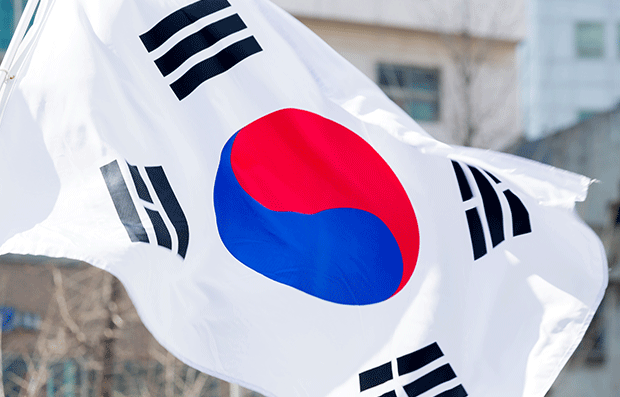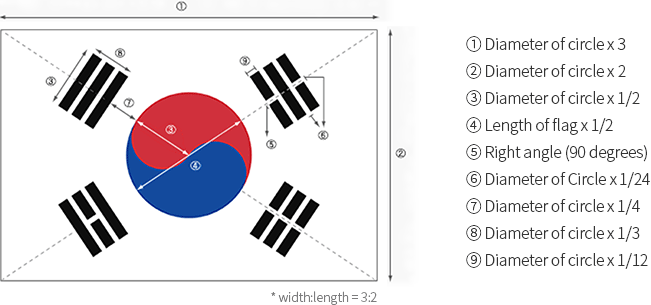National Framework Plan for Carbon Neutrality and Green Growth
The Korean Government set out the National Framework Plan for Carbon Neutrality and Green Growth for the first time in April 2023 through consultations with various stakeholders, as well as deliberations by the Presidential Commission on Carbon Neutrality and Green Growth and the Cabinet Meeting. The Framework Plan, which is to be updated every fiver years, is comprised of a number of sectoral implementation plans and measures for mitigation and adaptation to realized the national vision of a carbon neutral society by 2050. Please find the full text in Korean here.
Key policies by sector
-
Goal
- To accelerate the distribution of nuclear power and renewable energy and streamline demand based on the market
Tasks
-
(Energy transition) Reduce fossil fuels and enhance transition to nuclear power and renewable energy
- Fossil fuels: Eliminate coal-fired power plants that have been in operation for 30 years or more (28 units by 2036) and pursue hydrogen-ammonia co-firing subject to the development of environmentally friendly technology
- Nuclear power plants: Build Shin-Hanul units 3 and 4 as quickly as possible and continue to operate existing nuclear power plants, taking into account economic feasibility, energy security, etc. while ensuring safety
- Renewable energy: Pursue balanced distribution of energy sources by expanding offshore wind power
- Continue to expand clean energy: For the 4 million tons to be additionally reduced in the transition sector, pursue greenhouse gas reduction by increasing photovoltaic, hydrogen, and other clean energy and adjust/apply details after reflecting domestic circumstances when establishing the next Framework Plan for Long-term Electricity Supply and Demand
- (Strengthen the foundation for renewable energy) Expand the power grid and energy storage system, strengthen community acceptance of renewable energy, and establish a support system for businesses to achieve RE100
- (Streamline demand) Pursue innovation in streamlining demand in the areas of industry, buildings, transportation, and establish a reasonable energy pricing system based on market principles
-
Goal
- To use carbon neutrality as an opportunity to secure the future competitiveness of industries
Tasks
- (Technology acquisition) Establish a support system for the rapid commercialization of breakthrough technologies, and flexibly acquire new technologies by monitoring overseas technologies
-
(Supporting Investment) Introduce Carbon Contracts for Difference (CCfD) and increase carbon reduction subsidies/loans
- A policy that the government guarantees a fixed target price for a business that adopts a low-carbon technology for a set period of time, thereby encouraging investments for mitigation activities
- (Emission allowances) Encourage corporate mitigation activities through improvement in emission allowances system, and reduce the burden on businesses by increasing compliance flexibilities and support for facilities engaged in mitigation activities
- (Governance) Expand the work of the consultative body to improve communication between the government and industries
-
Goal
- To enhance energy efficiency by improving building performance and strengthening requirements
Tasks
- (Buildings) Increase zero energy buildings with appropriate follow-up programs, and expand green remodeling
- (Increase energy efficiency) Improve energy efficiency by expanding building efficiency evaluation management and disclosure of building performance information, strengthen mitigation efforts in the public sector to lead by example
-
(National land space) Strengthen compliance management of carbon neutral values in national land/urban planning and gradually expand climate change impact assessments in planning/development projects
- Reorganize spaces, increase green transport, green buildings, and carbon sinks, expand renewable energy, etc.
- (Governance) Expand the work of the consultative body to improve communication between the government and industries
-
Goal
- To achieve carbon neutrality in all forms of mobility including land, sea, and air
Tasks
- (Transition to zero emission vehicles) Increase the distribution of electric and hydrogen vehicles, expand the charging infrastructure, and develop lightweight materials and low carbon fuel technologies while also expanding eligibility for assistance with the early scrapping of older diesel vehicles
- (Manage internal combustion engine vehicles) Strengthen greenhouse gas and fuel efficiency requirements based on life cycle assessments and reinforce demand management for internal combustion engine vehicles by promoting public transportation, bicycles, etc.
- (Rail, air, and marine transportation) Strengthen environmentally friendly railway transportation, increase the use of environmentally friendly fuels, improve low-carbon ship technologies, and pursue decarbonization of all means of transportation
-
Goal
- Achieve sustainability in agriculture, livestock, and fisheries by transitioning to a low-carbon structure
Tasks
- (Agriculture) Disseminate smart agricultural practices using digital technology and actively promote low carbon agricultural technologies such as paddy water management and nitrogen fertilizer reduction
- (Livestock industry) Reduce greenhouse gas emissions from livestock by developing and distributing low-methane, low-protein feed, and reduce feed and otherwise improving livestock structure through ICT-based scientific management
- (Fishing industry) Develop and distribute LPG, hybrid, and other low and zero carbon fishing vessels, generate hydropower using aquaculture effluents, expand intelligent energy management in aquaculture/seafood processing facilities
-
Goal
- Complete a close resource cycle in all areas of society and the economy
Tasks
- (Reduce waste) Reduce waste source at the production and consumption by providing waste reduction equipment to businesses that produce large volumes of waste, reducing disposable products, and nurturing alternative new industries
- (Provide waste resources) Improve the collection system, such as by introducing waste collection by local government, and establish a stable supply system of useful waste resources by modernizing sorting facilities
-
(Expand recycling) Expand compulsory use of recycled plastic materials to all the processes, convert organic waste resources into biogas, and expand high-value-added recycling of waste solar panels, waste EV batteries, etc.
- Enforce extended producer responsibility for waste solar panels, life cycle history management of EV batteries, etc.
-
Goal
- Become a leader in clean hydrogen by creating an ecosystem that covers all stages of the hydrogen economy lifecycle
Tasks
- (Production and use) Establish a hydrogen production base and expand the use of hydrogen power generation, mobility, etc.
- (Infrastructure) Build a hydrogen pipeline network and develop pilot ports (2 sites by 2028)
- (Ecosystem) Establish safety requirements for the hydrogen sector and expand regional ecosystems such as hydrogen clusters and hydrogen cities
-
Goal
- Increase carbon absorption through quantitative/qualitative expansion of carbon sinks
Tasks
- (Forests) Enhance absorption and storage functions by expanding forest cycle management and timber utilization, restore core forest ecological axes and expand protected areas and preserve carbon sinks by minimizing forest disasters
- (Marine) Increase marine carbon sinks by restoring/protecting coastal wetlands and developing marine forests
- (New carbon sinks) Expand new carbon sinks by planting trees in urban forests, inland wetlands, fallow land
-
Goal
- Create new future industries through CCUS infrastructure and technology innovation
Tasks
-
(Institution) Enact CCUS legislation, launch a general consultative body on CCUS, and otherwise lay the institutional groundwork
- Define CO2 capture, storage, and utilization and industry development, safety regulations, certification criteria, etc.
- (Technology development) Secure key technologies by expanding CCUS technology development and demonstration projects
- (Infrastructure) Establish CCUS demonstration clusters and develop domestic and international storage facilities
-
Goal
- Contribute to global mitigation by actively developing and promptly implementing projects
Tasks
- (Establish the foundation) Modify project guidelines, activate the public-private support platform, and otherwise lay the groundwork for compliance
- (Identify projects) Actively identify projects in each sector through bilateral agreements with key countries
Climate change adaptation measures
- Improve Science-based climate risk monitoring and forecasting and enhance adaptation information
- Keep society safe from extreme climates by improving the adaptation infrastructure and response systems
- Become a sustainable society that has overcome changes in health, living environment, and agriculture, livestock, and fisheries
- Pursue climate adaptation where all adapting entities work together
Green industry growth side-by-side with the environment
- Achieve green technology innovation through increased R&D investment and commercialization support
- Establish a sustainable green industry ecosystem in this era of carbon neutrality
- Promote green finance for carbon neutrality and ensure financial stability in response to climate risks
Just transition
- Lay the social foundations for a just transition
- Provide thorough support to key groups affected by the transition
Locally-led dissemination of carbon neutrality and green growth
- Establish a compliance system for bottom-up carbon neutrality
- Strengthen central-local communication and cooperation and expand projects in regional areas led by public sector
Carbon neutrality and green growth workforce development and awareness
- Lay the foundation for carbon neutrality and green growth through workforce development in future low-carbon sectors
- Strengthen practical education and publicity to encourage public consensus and participation
International cooperation on carbon neutrality and green growth
- Strengthen climate leadership
- Bilateral/multilateral cooperation
- Enhance green ODA




